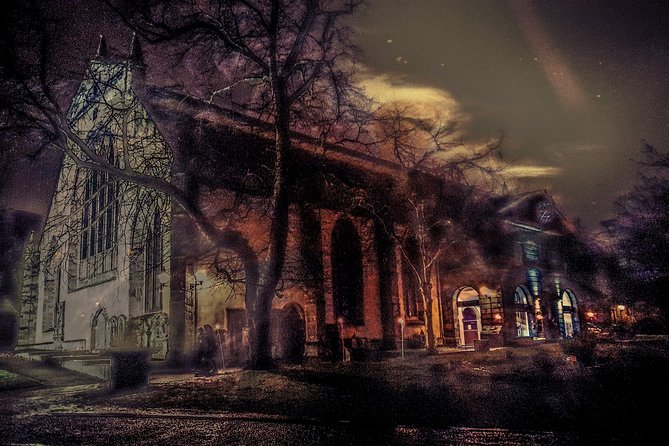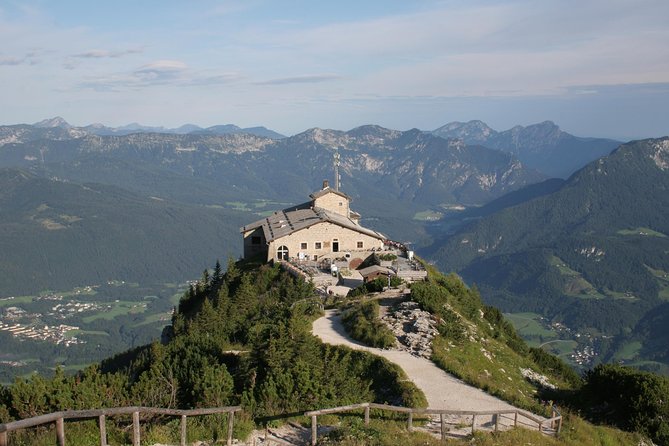Flensburg, a city steeped in German-Danish history, beckons visitors to uncover its rich cultural heritage through a private guided walking tour. Tracing the city’s strategic past, from its role as a ‘City of Rum‘ in the 18th-century trade networks to its significance during the Thirty Years’ War, the tour guides unlock the stories behind Flensburg‘s well-preserved architecture. As travelers explore the 13th-century Nordertor gate and admire the ornate merchant homes, they’ll gain insights into the city’s enduring importance as a crossroads of cultures. But the true wonder lies in the tales waiting to be discovered, inviting visitors to delve deeper into Flensburg’s captivating past.
Key Points
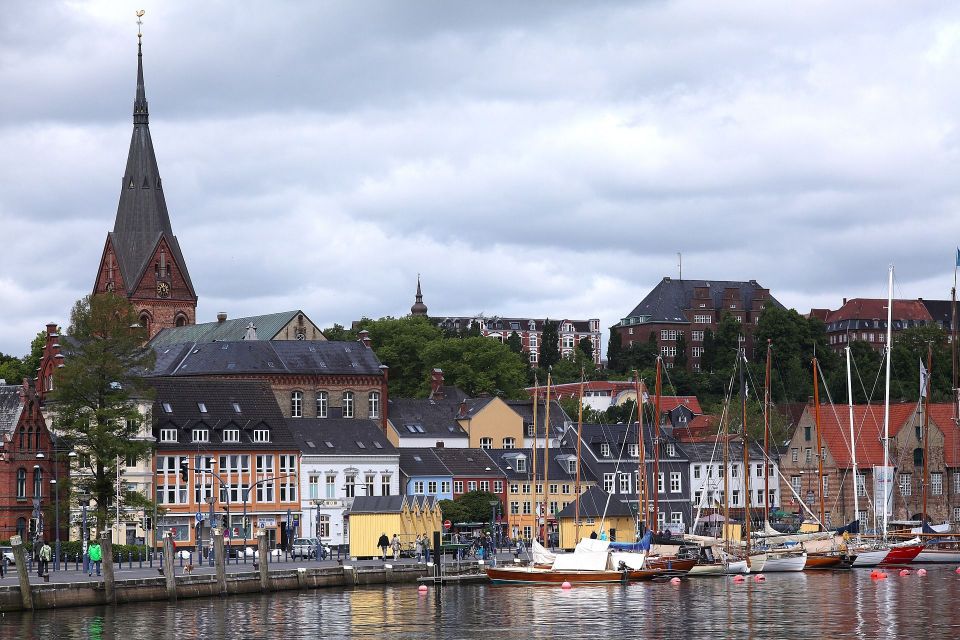
- Explore the well-preserved historic architecture and landmarks of Flensburg, including the Nordertor gate, Flensburg Town Hall, and the charming Gründerzeit-era houses.
- Learn about Flensburg’s strategic importance during the Thirty Years’ War and the Schleswig-Holstein Wars, and its role in the history of the Kingdom of Prussia.
- Discover the city’s unique German-Danish cultural heritage, as evidenced by the Danish minority community, traditional architecture, and Danish flags throughout the old town.
- Hear stories about Flensburg’s prosperous past as the ‘City of Rum’, when it served as a hub for the import and trade of rum from the Caribbean.
- Appreciate Flensburg’s commitment to preserving its historic buildings and cultural identity, ensuring the city remains a captivating blend of German and Danish influences.
Historical Significance of Flensburg
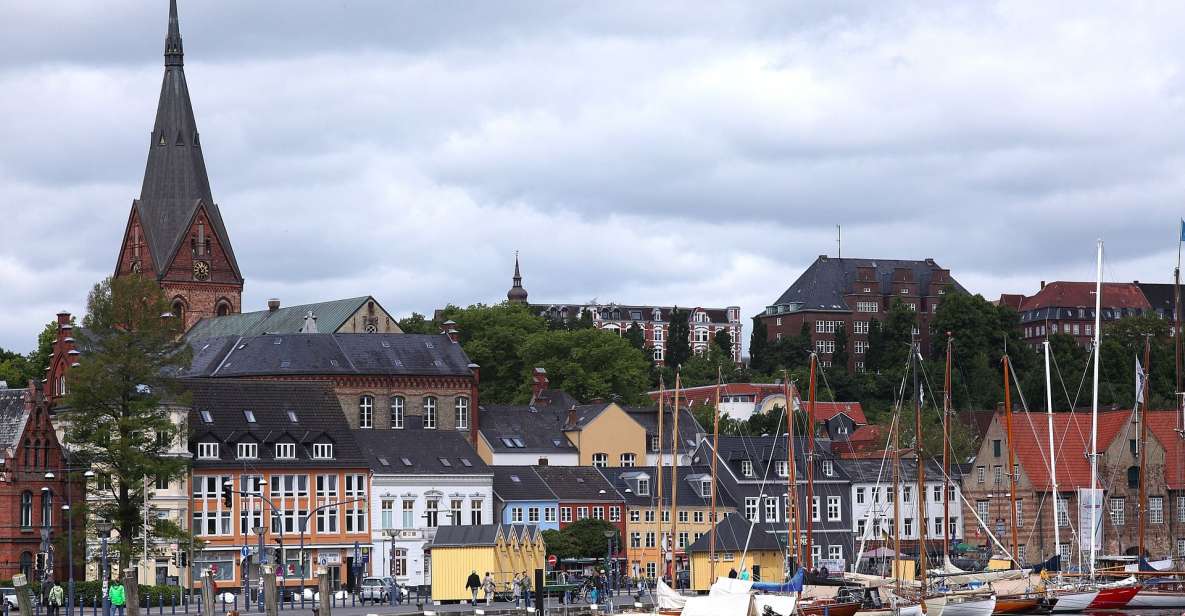
Flensburg boasts a rich history spanning over 700 years, reflecting its deep involvement in the Duchy of Schleswig and the Kingdom of Prussia.
The city played a significant role during the Thirty Years War, and its strategic location near the German-Danish border made it a key player in regional conflicts. The Battle of Flensburg, a notable event in the city’s history, showcased its importance as a military and political center.
Today, Flensburg’s historic landmarks and architecture stand as a testament to its storied past, offering visitors a glimpse into the region’s complex and fascinating history.
German-Danish Cultural Influences
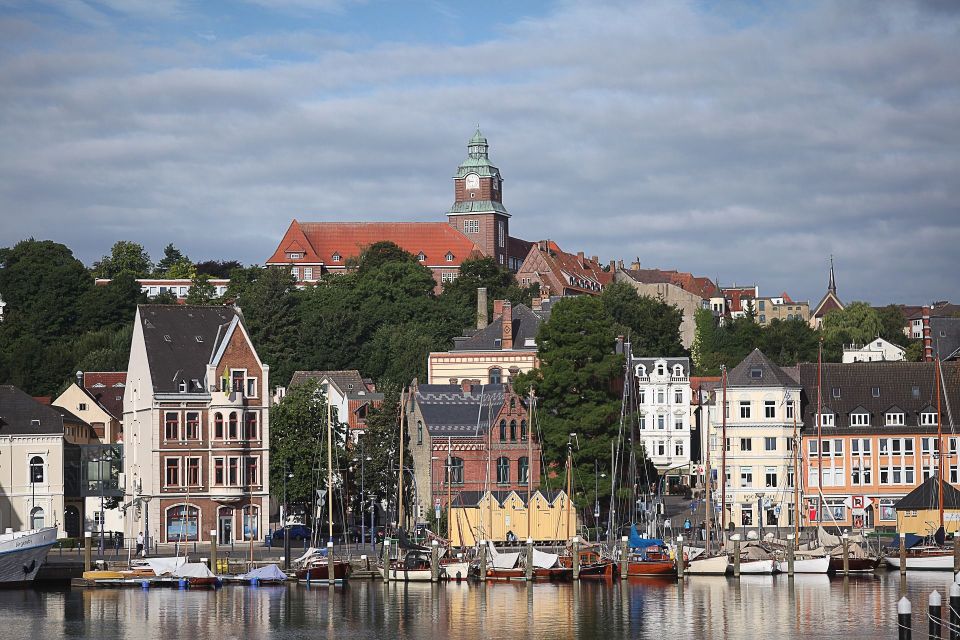
Reflecting its long-standing ties to Denmark, Flensburg’s architectural landscape and cultural traditions showcase the city’s German-Danish heritage.
The influence of Danish rule for over 400 years is evident in the city’s well-preserved historic buildings, many of which feature Nordic design elements.
This cultural blend is also seen in Flensburg’s thriving Danish minority community, which maintains its own schools, churches, and cultural institutions.
Visitors can explore this unique fusion by wandering through the picturesque old town, where they’ll encounter charming half-timbered houses, cobblestone streets, and the occasional Danish flag flying alongside the German counterpart.
Flensburg’s German-Danish character is a testament to the region’s complex history and enduring connections.
The ‘City of Rum’
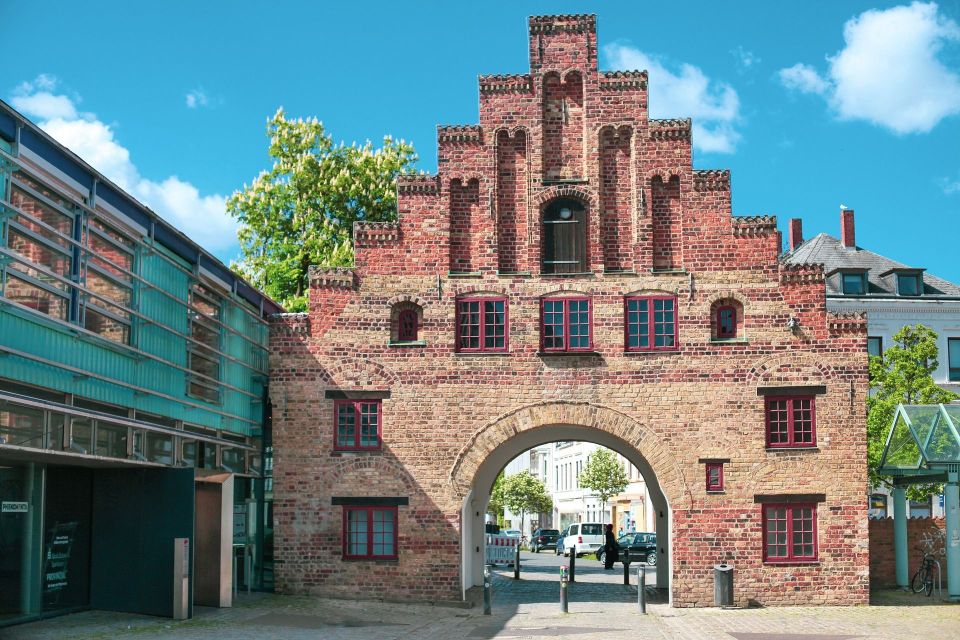
In the 18th century, Flensburg earned the nickname ‘The City of Rum’ due to its thriving trade with the Caribbean islands.
The city’s strategic location along the Baltic Sea made it a hub for the import and distribution of rum, a lucrative commodity at the time.
Several key factors contributed to Flensburg’s rise as the ‘City of Rum’:
- Its proximity to major trade routes connecting Europe and the Americas
- The hotel of a bustling port and merchant class
- The development of a robust infrastructure for storing, blending, and exporting rum
This prosperous trade period left a lasting mark on Flensburg’s architecture, culture, and identity, making it a unique destination along the German-Danish border.
Architectural Highlights
Today, the city’s historic buildings and well-preserved architecture captivate visitors strolling through Flensburg’s charming streets.
From the ornate facades of the merchant homes to the soaring spires of the churches, the architectural legacy of Flensburg’s past eras is on full display.
One of the town’s most iconic structures is the Nordertor, a magnificent 13th-century gate that once guarded the city.
Nearby, the Flensburg Town Hall boasts a striking Renaissance facade, while the Rote Strasse features rows of beautifully restored Gründerzeit-era houses.
Throughout the city center, cobblestone lanes and quaint market squares complement the refined architecture, creating a timeless, picturesque atmosphere.
Role in Prussian History
Flensburg played a crucial role in the history of the Kingdom of Prussia, serving as an important trading port and strategic location during pivotal events such as the Thirty Years War.
The city’s German-Danish heritage and position along the Baltic Sea made it a hotly contested territory, changing hands between Danish and Prussian rule over the centuries.
Key moments in Flensburg’s Prussian history include:
- The Schleswig-Holstein Wars, where the city was a key battleground between Prussia and Denmark in the mid-19th century.
- Its incorporation into the German Empire in 1871, solidifying Prussian control over the region.
- The city’s role as a naval base during the World Wars, underscoring its strategic importance.
Despite these conflicts, Flensburg’s unique cultural blend endures to this day.
Thirty Years War and Battle
Flensburg’s strategic location along the Baltic Sea made it a key player during the tumultuous Thirty Years’ War, as the city changed hands between Danish and Prussian forces throughout the conflict.
In 1627, Danish troops occupied the city, but were later driven out by the Imperialists. Flensburg then fell under Prussian control until 1643 when the Swedes took over.
The Battle of Flensburg in 1850 was another significant event, as Prussian forces clashed with Danish troops, ultimately leading to the city’s incorporation into the Kingdom of Prussia.
Today, these historical events continue to shape Flensburg’s German-Danish identity, which is celebrated through its well-preserved architecture and cultural heritage.
Preservation of Historic Buildings
The preservation of Flensburg’s historic architecture has safeguarded the city’s unique German-Danish character, which remains a defining feature of its urban landscape. Largely spared from the devastation of World War II, Flensburg proudly showcases its centuries-old buildings, from the charming half-timbered houses to the impressive Flensburg Cathedral.
This rich heritage is a source of great pride for the locals, who work tirelessly to maintain and restore these architectural jewels.
Key preservation efforts include:
- Strict regulations to protect the historical integrity of buildings
- Dedicated funding and grants for restoration projects
- Community involvement in preserving the city’s cultural identity
This commitment to the past ensures Flensburg’s future as a captivating blend of German and Danish influences.
Modern Relevance and Motor Authority
Today, Flensburg is renowned as the headquarters of the German Motor Vehicle Authority, cementing its role in the country’s transportation landscape.
This organization, which oversees the regulation and licensing of vehicles nationwide, has found a fitting home in this historic town. Its presence here speaks to Flensburg’s continued significance in modern Germany, where its strategic location and well-preserved infrastructure make it an ideal base of operations.
Beyond its role in the automotive industry, the city has also become a hub for regional commerce and tourism, drawing visitors to its charming streets and architectural treasures.
Flensburg’s past and present are seamlessly interwoven, creating a unique blend of heritage and modernity.
Frequently Asked Questions
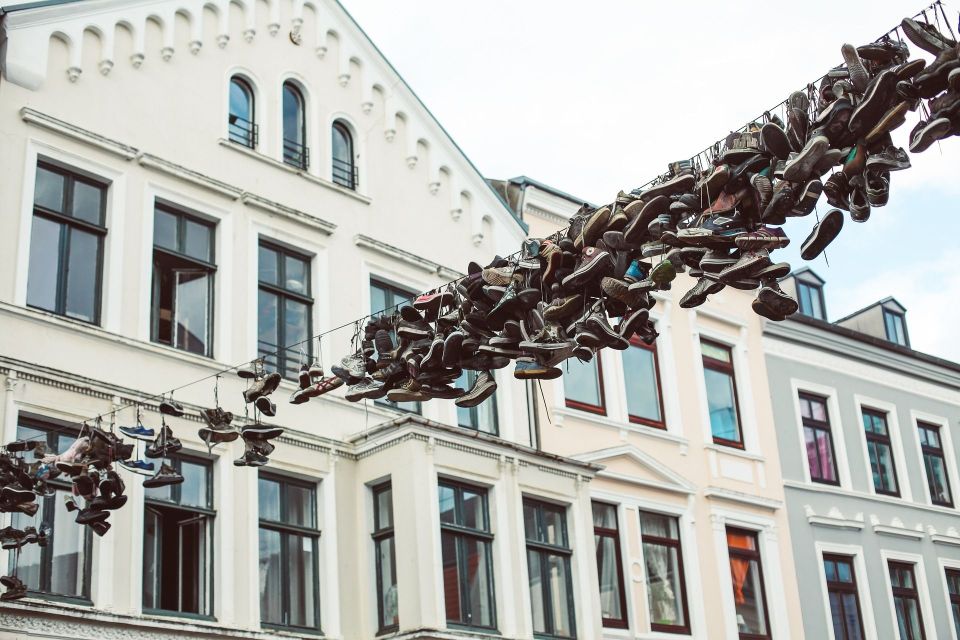
What Is the Duration of the Walking Tour?
The guided walking tour of Flensburg is 1.5 hours long. It allows visitors to explore the city’s historical highlights and architecture during a concise yet informative experience.
Are There Any Age Restrictions for the Tour?
The walking tour does not have any age restrictions. People of all ages can participate, as long as they are able to comfortably walk for 1.5 hours. The tour is not suitable for those with mobility impairments or wheelchair users.
Can the Tour Accommodate Large Groups?
The tour can accommodate large groups, but the maximum group size is typically 20 people. Larger groups may be split into smaller sub-groups to ensure an engaging and personalized experience. Advance booking is recommended to secure availability.
Is Photography Allowed During the Tour?
Yes, photography is typically allowed during the Flensburg walking tour. The tour guide will likely encourage participants to take photos to capture the city’s historic architecture and charming sights along the way.
Is There an Option for a Private or Customized Tour?
Yes, the tour offers a private guided walking option. Customers can customize the experience to their interests and explore Flensburg’s historical highlights and architecture at their own pace with a personal guide.
Recap
Flensburg’s private guided walking tour offers a fascinating glimpse into the city’s rich history.
Visitors can explore its well-preserved architecture, discover its strategic importance, and uncover its role as a trading hub.
This personalized experience allows travelers to appreciate Flensburg’s enduring significance as a crossroads of German-Danish cultures and its ongoing relevance in the modern era.



